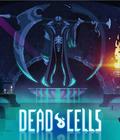To beat the game you’ll have to master 2D souls-like combat with the ever present threat of permadeath looming. No checkpoints. Kill, die, learn, repeat.
Roguelike, Rogue-lite, roguelike-like, rogueschmike! The world needs more of these and we'd like to present for your consideration, the RogueVANIA. This means an interconnected world that you unlock progressively through exploration and battling bosses, with death replacing backtracking. Each death will unlock more of the world and you’ll begin to understand the scale of the choices in front of you. Sick of the stinking sewers? Why not go over the ramparts? It’s your skill, playstyle and of course the loot you find that will determine your choice your path.
But don’t think this will be a walk in the park. Pattern based monsters, and demanding boss fights will force you to fight cautiously and build your strength. Every weapon has its own unique feel and rolling and dodging will become second nature as you learn to manage the mobs of monsters that will overwhelm the unprepared. Tough, but fair.
Tired of the violence and death? Explore a bit, take a stroll, enjoy the view from the ramparts, find a secret room. Thomas and Gwen, our graphic artists, never miss an opportunity to impress with their pixelart and shape a world that you’ll want to explore. You might even learn a little more about the lore of the place, who knows?
By mixing procedural generation with metroidvania game design, Motion Twin wants to provide players with replayability and discoverability, but also maintain a sense of gated progression. However, instead of backtracking through environments, they let death and rebirth be the mechanic for forward progression in Dead Cells.
Here are three benefits to using procedural generation in a metroidvania style of game:
“Unfortunately, relying too much on procedural generation leads to bland level design, often feeling messy and rather inconsistent,” said Steve Filby, marketing manager at Motion Twin. “A good example of the middle ground between pure procedural generation and fully handmade is Spelunky. Their approach allowed them to get that consistent feeling while keeping a lot of diversity. We’ve basically adopted the same approach for Dead Cells.”
- Procedural generation can provide you with more content than what we could ever do if we tried designing everything by hand.
- It allows the developer to shift where the difficulty lies in the game. Instead of asking the player to memorize the level and enemy positions in order to make it through, the developer can reward reflexes and instinctive play, which is something they’ve found to be much more interesting overall.
- It brings a lot of replay value and diversity to each run, which is fairly important when talking about a game with permadeath as a central mechanic.
Key Features:
- RogueVania: The progressive exploration of an interconnected world, with the replayability of a roguelike and the adrenaline pumping threat of permadeath.
- Souls-like combat: Pattern-based bosses and minions, weapons and spells with unique gameplay. Make do with what you have and don’t forget to roll.
- Nonlinear progression: Unlock new levels with every death and explore undiscovered parts of the castle as you prepare for the inevitable bosses.
- Exploration: Secret rooms, hidden passages, charming landscapes. Death is now your way of backtracking.
More articles about Dead Cells











 Dead Cells is a roguelike, Castlevania-inspired action-platformer, allowing you to explore a sprawling, ever-changing castle… assuming you're able to fight your way past its keepers.
Dead Cells is a roguelike, Castlevania-inspired action-platformer, allowing you to explore a sprawling, ever-changing castle… assuming you're able to fight your way past its keepers.